An Annual Adventure with Smithsonian Gardens
As summer draws to a close, one of our newest staff members, Phil Evich, shares his thoughts and observations from time he spent rotating through each of the Smithsonian gardens and landscapes earlier this season. Phil was able to work with all the Smithsonian Gardens horticulturists, which gave him a better understanding of the designs and themes that go into our annual displays.
I journeyed into the wonders of Smithsonian Gardens with only an impression of the work ahead of me. I joined this strong team of horticulturists back in January and was heartily overwhelmed, to say the least. In the spring, under pink clouds of blooming magnolias, tulips flashed their bold colors and then faded. By late April the gardens were preparing for a transition, one much larger than I could have expected. As I popped bulbs out of the still cold soil and composted overwintered pansies, dreams of summer were beginning to take shape. Then May arrived and with a new soil knife in hand I began planting many hundreds of the thousands of annuals that now greet you upon visiting the many Smithsonian museums. But for now I can’t take any credit for that…
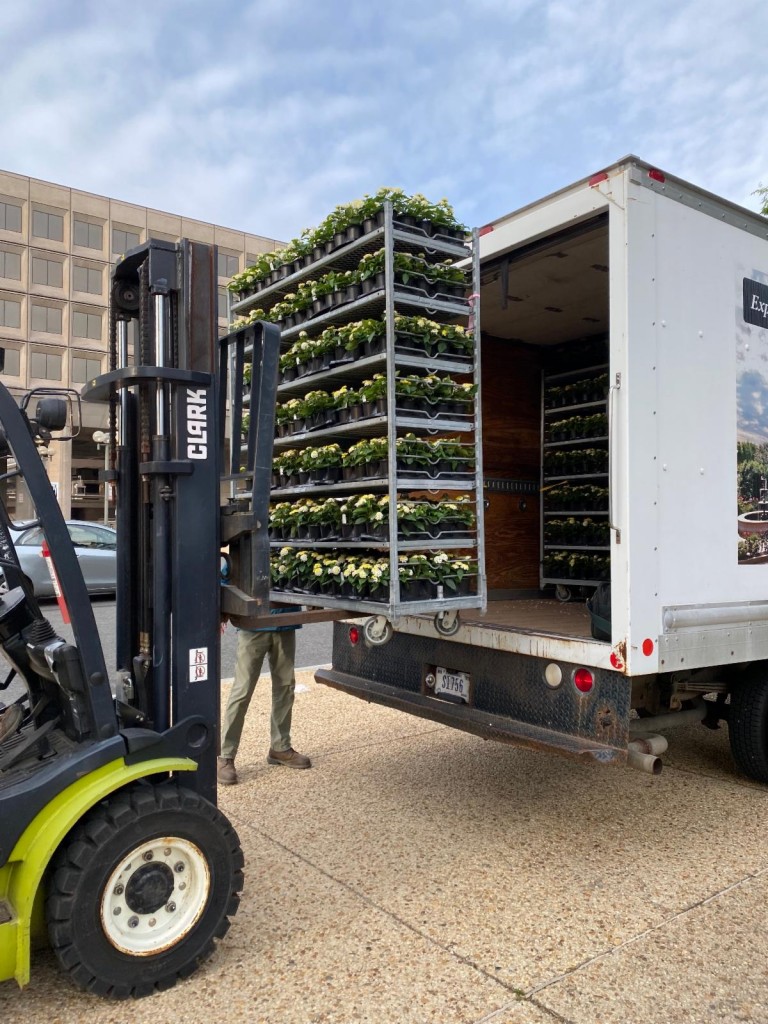

Annuals are loaded on carts at our greenhouse facility, trucked to the various gardens around the museums, unloaded, and planted.
May means business for the Smithsonian Gardens team. Each day that month, trucks loaded with racks of plants were driven from the Smithsonian Gardens Greenhouse Facility to the staging site at each museum. The greenhouse team received plant requests the previous fall and got to work sourcing seeds for propagation over the winter and early spring. How amazing is it to work with such a vibrant diversity of plants, all grown in-house? We are incredibly lucky.
With plants on hand, the digging commences. “But what goes where, and why? And what plant is that? And how many plants are going in the parterre of the Haupt Garden?” All these questions were racing in my mind as I pulled pots off a sea of ‘Little Lemon Glow’ Lantana that would soon find a home in the crossing lines of the parterre garden. There would be time for answers, but planting was underway and the gardens were quickly filling with a breath of new life. Working with so many gardeners across the campus, with so many new plants, I settled in to learn all I could from the experts at Smithsonian Gardens.
I observed as gardeners and horticulturists each orchestrated a different symphony of textures, color, shape, and foliage from plants that stretched all over the world. Janet Draper of the Mary Livingston Ripley Garden wanted to diverge from her usual harmonies of blue and orange and conduct a “Tropical Explosion.” She consulted with the tropical growers at the greenhouse and let them pick four palms to be the foundations of the design. Janet leaves the rest as an intuitive art, selecting from a wide range of specimens, including for the first time plants from the Butterfly Pavilion at the National Museum of Natural History. Janet reminded me that “Flowers are fleeting. Foliage is what holds a garden together.” As I headed out to the Folger Rose Garden, I brushed against a weeping Otatea demanding to be noticed. Her lesson stuck.

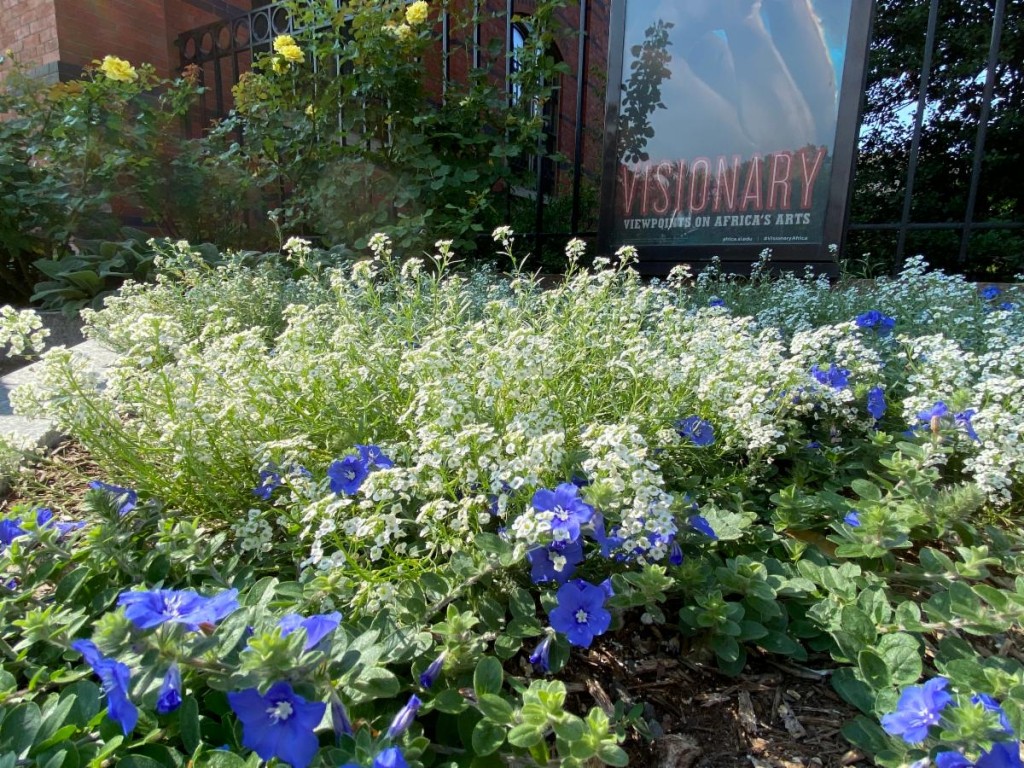
The Kathrine Dulin Folger Rose Garden is maintained by Shelley Gaskins, who is tending a relatively new installation of disease-resistant roses. Working with one of the most classic perennials, I was intrigued by how Shelley uses annuals against the fragrant petals of the rose. “I like to use blues, whites, and silvers because they don’t clash with the roses.” White Alyssum creeps throughout the entire garden, giving the impression of a soft wave break bubbling on the shore of her garden. She plants it every year “because the beneficial insects love it and it smells great, although it performs slightly better in the cooler seasons.” In a garden famous for its roses, annuals are used as tools to fill gaps and add accent around the rosy showstopper.
The Rose Garden sits peacefully next to the immense Smithsonian Castle. Neatly manicured in large swathes of orange Lantana, Coleus, and Begonias with an almost true black leaf, the work of Rick Shilling gracefully smooths out the Castle’s Victorian edges. Large tropicals like bird of paradise (Strelitzia sp.) and the stunning variegation of Colocasia ‘Black Beauty’ add a third dimension to the garden, rising up from the flowers and inviting you to ponder the way different textures and leaf sizes create a garden you have to stop to admire. Rick’s favorite color yellow is featured prominently this year around the nearby Ripley Kiosk. “I start with a color and work from there when drafting a design. You have to know where the sun and shade hits at different parts of the day and how that’s going to affect your plant selection.”
On the south side of the Castle is the Enid A. Haupt Garden, the elegant formal garden of the Smithsonian. With crisscrossing diamond patterns of turf, four large “buttons,” and fleur-de-lis hedges, the parterre is a relic of Renaissance design which commands balance, symmetry, and simplicity. Horticulturist Michael Riordan chooses plants that are reliable and disease-resistant to prevent a crop failure from affecting the entire design. Working in such a large and notable garden, there isn’t time for error. Spacing out plants before they are installed is done with the help of a tension line to assure that each plant is exactly where it needs to go. The meticulous planting is done by a large team of gardeners and volunteers who come out for a morning to install the entire design, double checking each other’s work and fine tuning as we go.

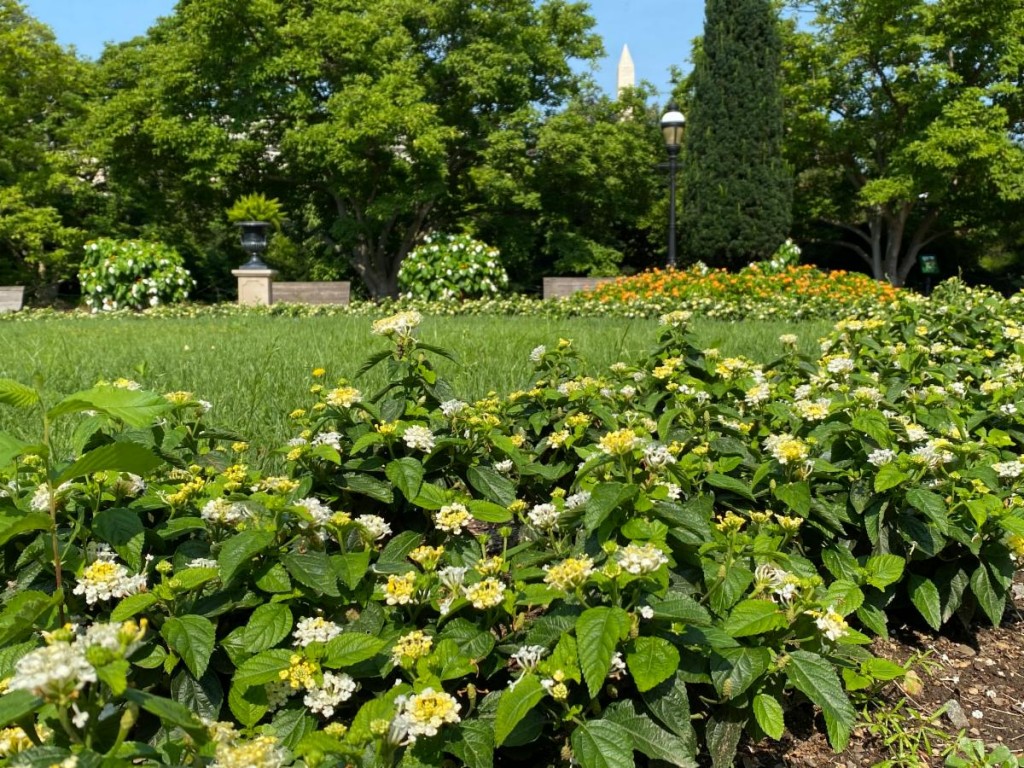
I continued on with Eric Calhoun who is leading the planting efforts at the National Museum of African American History and Culture. Here, annuals are concentrated near the entrance and around the border of the outdoor café area. Eric’s plant choices reflect the relationship between themes explored inside the museum and culturally significant food crops, such as okra and hibiscus. The blend of beauty embedded with meaning highlights the deeply entwined history that humans share with plants. Eric is mindful of the site’s established perennials when choosing colors for his designs, holding up different flowers such as Cuphia ‘Vermillionaire’ against the pale grey-green of the Perovskia or the dark seed pods of Baptisia. “I focus on texture and foliage to gain contrast against flowers.” Near the entrance in raised planters, Sarah Tietbohl designed a bold palette of rich foliage using Colocasia ‘Hawaiian Punch’ and Coleus. The rich colors stand out under the awning of the museum and look great with the Washington Monument in the distance. Sarah also is responsible for maintaining the Hirshhorn Museum and Sculpture Garden where she uses Asclepias ‘Ice Ballet’ to tie the perimeter of the Sculpture Garden to the perennial white flowers of Gaura on the slopes of the interior garden, where color is muted in order to highlight the sculptures.

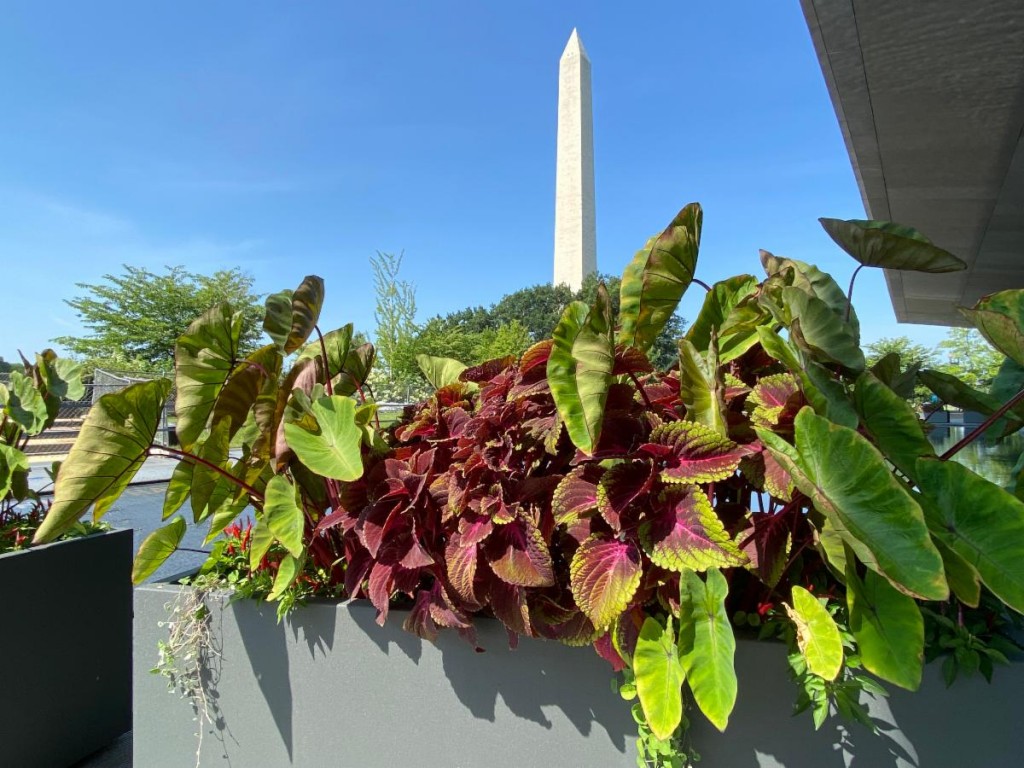
By August, D.C. is covered in the thick bloom of crape myrtles. The same is true at the National Museum of American History, where the gardeners work with the electric pink flowers there to find balance in their annual designs. Erin Clark, managing the Common Ground: Our American Garden exhibit, likes to match the pink with petunias, such as the ‘Mini Vista Hot Pink’ cultivar. By tying the overstory to the raised beds, she then looks to add contrast and other bright colors in her designs. Her combinations create a lively scene when approaching the museum entrance. On the other side of the building, Alex Dencker explained how the crape myrtles influence his color choices. He goes for subtle and deep colors, explored in his combination of fuchsia Coleus next to a purple-leaf basil, a lighter variegated Caladium, and accented with a mint green sage to balance it all out. Matt Huber of the Victory Garden has a completely different relationship to his annuals. Growing mostly heirloom edible plants, Matt’s garden doesn’t focus on color; rather, he grows a wide variety of crops to highlight and educate visitors about where our food comes from. Where most gardens focus on big flowers, Matt tends to the many fruits that follow the flowers on plants like tomatoes and peppers. “People sometimes don’t realize that there’s more than one kind of tomato. To showcase the diversity of one crop is really meaningful.” Matt’s plants also coordinate with the Food: Transforming the American Table exhibit inside the museum, drawing connections to the history and developing food culture in America.

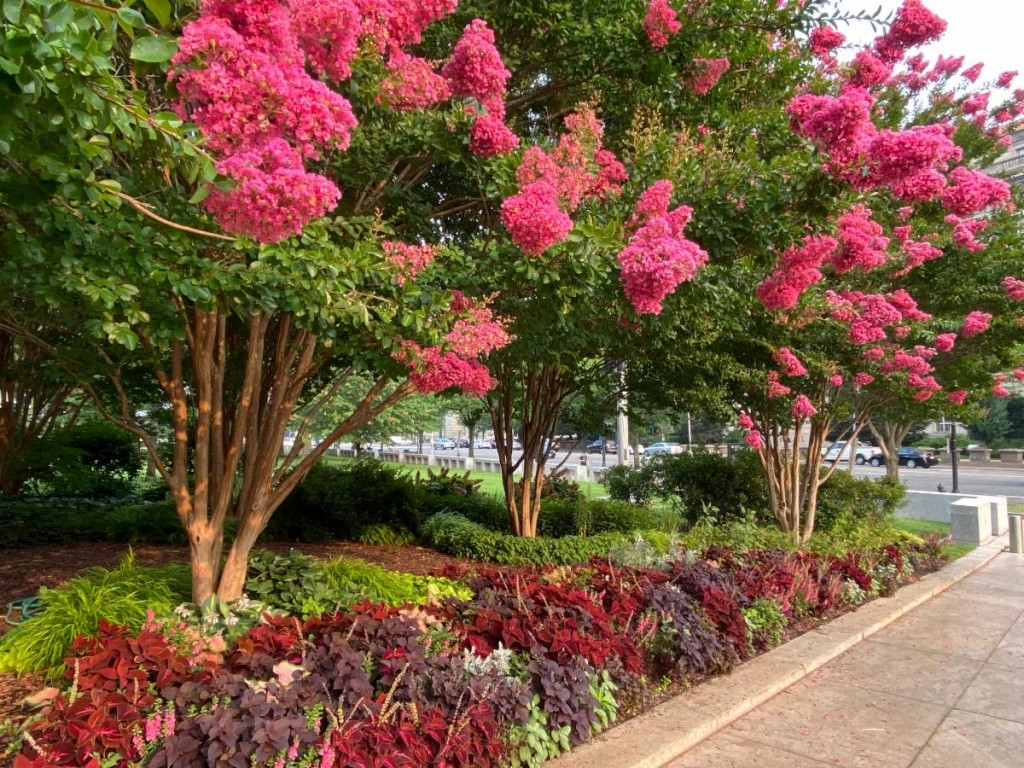
Across the street, the gardens around the National Museum of Natural History are a haven for bird and insect food sources. Designed with a large diversity of native perennial plants, I was surprised to learn how annuals are still a unique focal point throughout pockets of the landscape. Working in the Pollinator Garden, Sylvia Schmeichel picks annuals first for their function. “I plant what will enhance the ecosystem services and extend the season for our pollinators.” Even in a native garden, pollinators will be happy to find extra nectar sources in annuals such as Zinnia, Salvia, and parsley, to name a few. In the shady Urban Bird Habitat, Mike Allen chose a red Coleus to draw your eye to the deepest parts of the garden, while using white Impatiens for a dramatic contrast to the various shades of green that weave through the understory. Mike softened the edges in this garden space by using a velvety green Plectranthus.
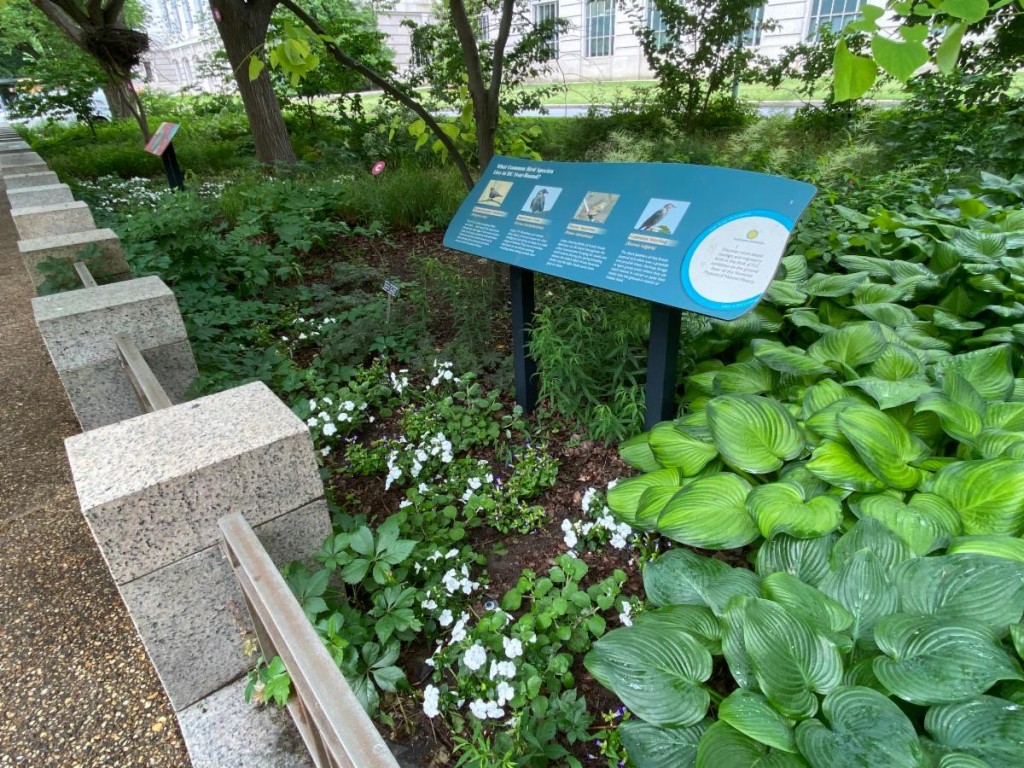
I ventured next across the National Mall to another native place, the National Museum of the American Indian. Here, the landscape is divided into various habitats which reflect ecosystems that existed before European contact. The landscape ties to the ecology of the site it stands on, the Piedmont, yet in the croplands, gardener Christine Abelow-Price cultivates food crops from native tribes across the entire Western Hemisphere. For Christine, each annual carries deep cultural meaning. Corn planted in the ‘Three Sisters’ bed is Cherokee white corn, which is used for grinding into flour. Crop rotations are an integral part in the layout of plants each year. “Some plants naturally deplete the soil of certain nutrients, so we rotate them and leave certain plots fallow. Tobacco must always be rotated.” Christine collaborates with various Native American tribes to determine which crops to grow as well as with chefs from the museum who use many plants in their cuisines. The Hawai’ian Canoe Garden features tropicals like breadfruit, banana, candlenut, and taro, all edible or useful plants that native Hawaiians brought to their islands for survival. The croplands are an integral symbol and interpretation of the museum while also being strikingly beautiful. Golden sunflowers reach up from the background and pink flowering cannas sway underneath them while the heirloom Hopi Red Dye Amaranth holds the attention of any passerby with its deep burgundy foliage and seeds.

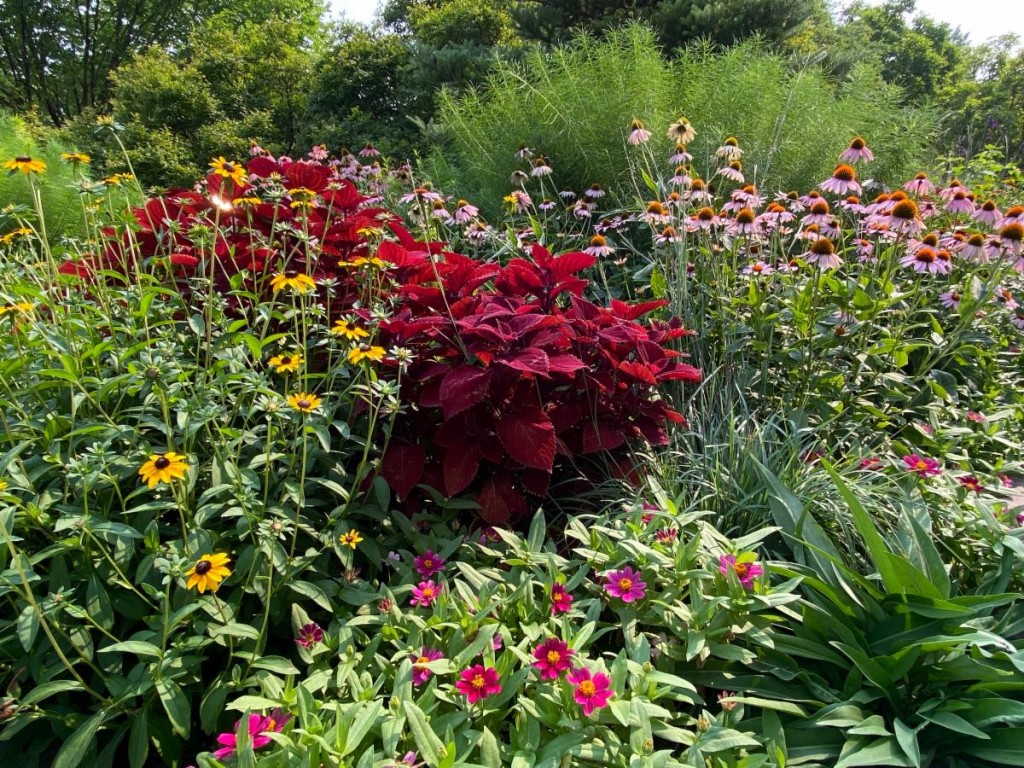
Last, but surely not least, I met with the team at the National Air and Space Museum. The strong sense of continuity that stretches throughout and under the large plots of perennials not only adds to the vibrancy of the garden but provides a visual point of interest no matter where you look, no matter what is blooming. A sense of place is what makes this garden timeless. “Here, annuals are mostly about aesthetics, and aesthetics make people feel welcomed,” stated Sarah Dickert. Lessons learned from past designs help inform plant choices and determine what worked best together: What worked well? Which plant was too fussy? How did a color contrast under a certain foliage last year? “I start with a plant I like and build out from there. Each year I learn more about them and have more fun,” noted Steve Mann. He likes to keep the gardens “full but tidy,” explaining how once the plants are installed, maintaining them is a daily exercise. “By the time you’ve worked your way through the whole garden, the side you started on is in need of more work.” And so it goes.
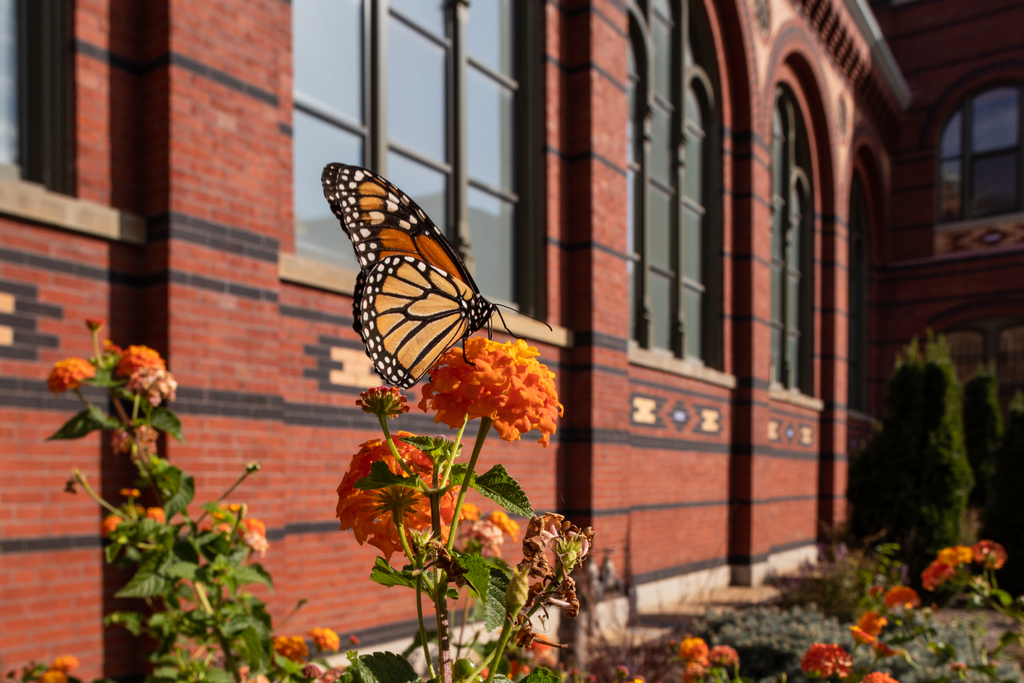
And so it goes! It’s late in the summer now and the annuals are full and reaching their peak brilliance all over the Smithsonian Gardens landscapes. But words can never do a garden justice.
Come visit our gardens to explore the beauty of all our hard work in person. It won’t be long before we transition out from summer and tuck more spring bulbs into the ground for yet another year of flowers, foliage, and fun.

